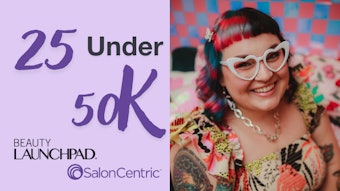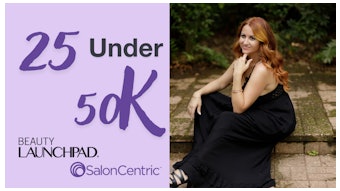
According to the American Optometric Association, the majority of people over the age of 65 experience dry eye syndrome. And women—your clients—tend to be more at risk than men. “It’s more common in women due to hormonal changes,” explains Rebecca Taylor, MD, clinical spokesperson for the American Academy of Ophthalmology in Nashville, Tennessee. Other reasons why your client may have dry eyes: due to diseases or conditions such as rheumatoid arthritis, lupus, thyroid issues, Sjögrens Syndrome and blepharitis; certain medications; contact lenses; environmental factors, such as smoke or dust; or excessive visual demands.
RELATED: Pros Share Their Essential Lash Photo Apps
The Basics
So what does dry eye syndrome actually do? “The body isn’t producing the adequate amount or the type of tears that are necessary to keep the eye satisfied and healthy,” shares
Dr. Taylor. While the symptoms can vary drastically, the treatments are fairly straightforward. Think: adding moisture with over-the-counter artificial tears, improving tear production with medicated drops or conserving tears by plugging one or both eye ducts with a punctal plug. “[The plug] keeps tears being made by your eye on your eye longer,” explains Dr. Taylor.
The burning question: Are clients with dry eye syndrome candidates for lash extensions? “Absolutely,” assures Dr. Taylor. “Once they’ve been treated for dry eye syndrome there’s absolutely no reason they can’t wear extensions.”
RELATED: How to Overcome Volume Lash Obstacles
Steps Techs Can Take
Though dry eye syndrome gets the lashing green light, you can ensure maximum retention and comfort for your client with a few modifications. For starters, opt to go shorter on lash length. A good rule of thumb: Don’t increase the extension length by more than one-third the length of the eye’s width, says Leah Lynch, international trainer, judge and owner of Beautique Salon Spa and Lash Lounge in Newburyport, Massachusetts. “[Too- long lashes] can cause a ‘breeze’ on the eye that may evaporate tears more quickly and actually dry the eye,” she says, citing a 2014 study centered on mammals and eyelashes published in the Journal of The Royal Society. Also, the more lashes, the greater the chance they’ll catch environmental pollutants that can exacerbate dry eyes, so go easy on the amount of extensions you apply, suggests Lynch. Also, consider using a handheld nebulizer and instruct clients to keep their eyes closed throughout the service as well as a few minutes after completion. “The cyanoacrylate will try to use the eye’s moisture to cure if the eye is open slightly and, since the nebulizer instantly cures, it won’t pull moisture from the skin or eyes that can cause irritation,” she says. A must: Send clients home with care instructions. You’ll not only want to teach clients how to wash their eyelids but also how to correctly put in their eye drops. “[Since] conditions such as blepharitis can often coexist, washing the eyelids can help to improve both conditions,” explains Lynch. As for eye drops, “they can really destroy a set of lashes if they aren’t put in right!” she says.
No matter what, make sure you have an open dialogue with clients who have dry eye syndrome about any special needs.
Red Flags
If clients present with any of the bulleted symptoms, you’ll want to ensure that they receive treatment prior to their extension service. “When you start putting products and chemicals around the eye, there’s a good chance you’ll make the problem worse,” warns Dr. Taylor.
- Red eyes
- A gritty, sandy sensation as if something is in their eyes
- Burning or stinging
- An overabundance of tears
- A stringy discharge
[Image: Getty Images]











